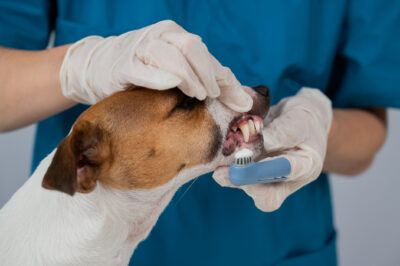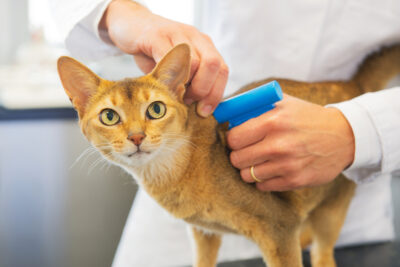Is Lavender Safe for Cats?

Lavender—the shrubby plant with lovely purple flowers—surrounds us as herbal remedies, oils, skincare products, and wellness treatments. While humans often turn to it for its many benefits, is lavender safe for cats?
The calming scent may be beneficial for humans in relieving stress and anxiety. However, lavender, especially in the form of oil, can be dangerous to your feline friend.
Below is a detailed guide to keeping your cat safe from lavender. Keep reading for information on types of lavender, poison prevention, and treatment options.
Cats and Lavender: Is it Safe?

According to the American Society for the Prevention of Cruelty to Animals (ASPCA), lavender plants are toxic to cats and can cause nausea and vomiting. “Lavender contains linalool and linalyl acetate, and cats lack the enzymes necessary to process these compounds,” says Dr. Rachel Barrack of Animal Acupuncture in New York City.
Even more worrisome is lavender in its essential oil form, which Barrack says has the highest toxicity levels. “Oils are the most potent because they can be vaporized and inhaled or absorbed quickly through the skin resulting in acute toxicity.”
According to the ASPCA, cats are especially sensitive to essential oils. They can experience gastrointestinal upset, central nervous system depression, and even liver damage when they ingest significant quantities.
Are Lavender Plants Toxic to Cats?
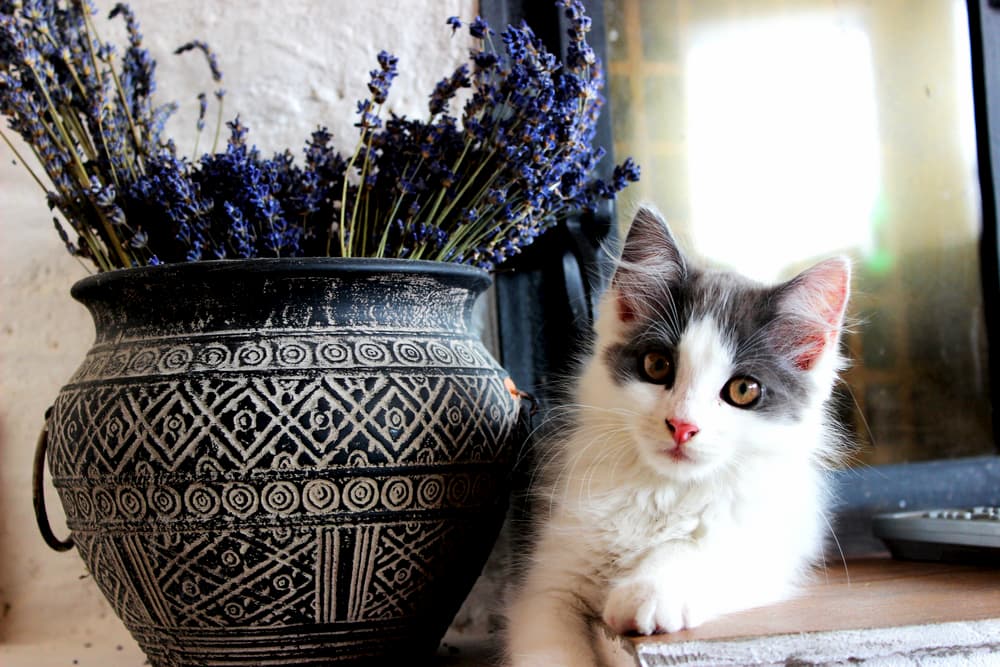
In many households across the country, fragrant lavender plants adorn window sills, indoor spaces, and gardens. While serves as a pleasant home accessory for humans, the plant may pose some health concerns to cats.
Dr. Jamie Richardson, medical chief of staff of Small Door Veterinary in New York, says the lavender plant itself isn‘t dangerous to cats, unless ingested. “Some cats even seem to enjoy sitting in or near outdoor lavender plants,” she says. “Most cats will not voluntarily ingest lavender plants, however on the off chance they do, they can cause gastrointestinal upset (usually vomiting).”
Barrack explains that cats can become sick just from licking a lavender plant and not fully ingesting it. This also applies to potpourri made with dried lavender spikes.
If you choose to keep lavender plants in your home, closely monitor how your cat interacts with it.
Can I Diffuse Lavender Around My Cats?

Besides as a plant, lavender comes in other forms like oils, sprays and diffusers. Bad news for lavender-loving cat owners: All of these have varying degrees of toxicity to cats, depending on exposure.
Lavender essential oil is the most toxic form of lavender for your felines. “Cats are more susceptible to essential oils than some other species as they are missing a specific enzyme in their liver that helps them metabolize certain drugs, including essential oils,” says Richardson. “Besides the dermal absorption that can occur rapidly, cats will often groom off foreign substances that have been applied to their coat, therefore, ingesting the oil.”
Lavender oil diffusers and sprays tend to have low levels of lavender. However, they can still enter your cat’s respiratory system. Richardson says that while there are limited studies on the longterm effects of essential oils for both humans or animals, no clear evidence exists on a safe level of exposure.
“We do know that cats can be extremely sensitive to even passive, diffused aerosolized products, leading to respiratory irritation in their lungs, causing asthma,” she says.
Cats may also get lavender poisoning when licking droplets from diffusers and sprays fallen on their fur. “Essential oils in active diffusers (where microdroplets are released into the environment) or sprays can fall onto a pet’s fur coat, where they can be absorbed through the skin or ingested during grooming,” warns Richardson.
Signs of Lavender Toxicity in Cats
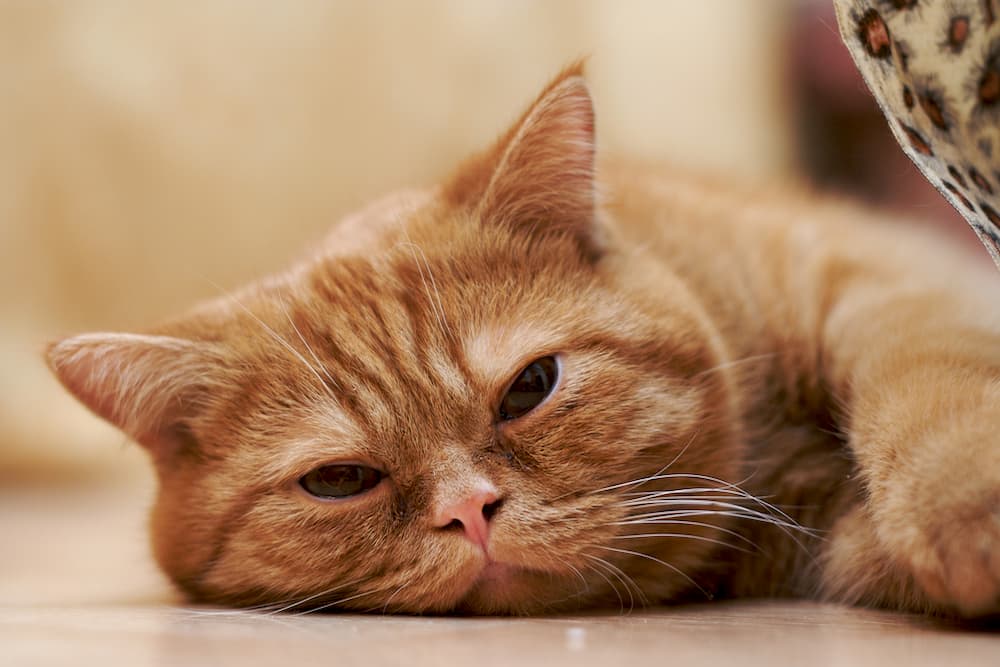
According to both Barrack and Richardson, symptoms of lavender toxicity in cats include:
- Drooling
- Gastrointestinal signs such as vomiting and diarrhea
- Inappetance (refusal to eat)
- Lethargy
- Neurological signs such as staggering, stuporous or drunk like behavior, and tremors
- Decreased respiratory rate, asthma, or aspiration pneumonia
- Changes to heart rate/rhythm
- Liver failure
“There is no established toxic dose for lavender oil,” says Richardson. “It depends on each individual cat’s sensitivity to it and route of exposure.”
Your cat may experience gastrointestinal symptoms rapidly, within the first three hours of exposure or ingestion. However, Richardson states that “liver or kidney damage can take several days to become apparent via blood tests.”
When inhaled, essential oils can also cause aspiration pneumonia, according to Barrack. Aspiration pneumonia is a lung infection in which the cat’s lungs become inflamed from the inhalation of foreign material. It’s most common with regurgitation or vomiting, which also accompany lavender poisoning.
How to Treat Lavender Poisoning in Cats
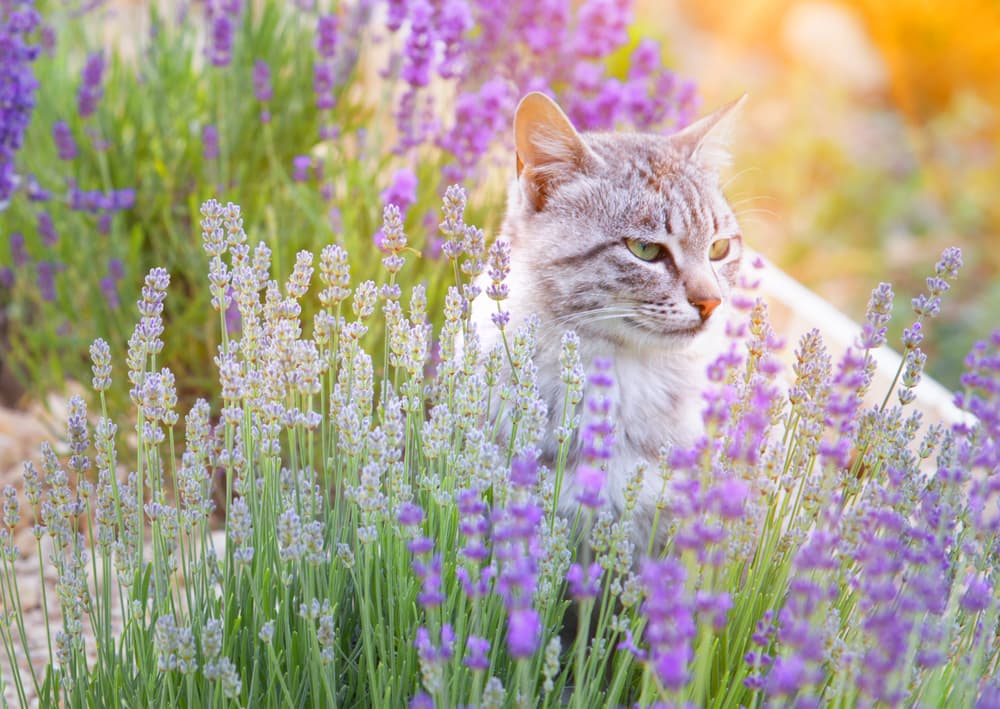
If you notice your cat has come into contact with a lavender product, Richardson recommends thoroughly bathing your pet. She then recommends calling the ASPCA’s poison control hotline (888-426-4435), anytime of the day for further information specific to the case. “They will be able to advise if you are safe to monitor your cat at home, or if you should get to your nearest vet ASAP, and the appropriate next steps that can be taken,” she says.
If your cat is showing respiratory changes like rapid breathing, coughing and/or watery eyes after coming into contact with lavender oil/spray/diffuser, Richardson suggests moving the pet somewhere with fresh air and contacting your veterinarian.

When you suspect lavender poisoning based on the above symptoms, bring your cat to a veterinarian. “If a few drops come into contact with your cat, a quick and through bath may suffice,” says Barrack. “But if any more, or you suspect aspiration, ingestion, or your cat is showing signs of lavender poisoning, contact your primary care veterinarian immediately.”
For cats diagnosed with lavender toxicity, Richardson explains that a physical examination and possible admittance to the hospital for blood samples and IV fluids may be necessary. Depending on the exam findings, medication can help calm the gastrointestinal upset and/or help heal the liver and kidneys.
Lavender in Your Home: Protecting Your Cat
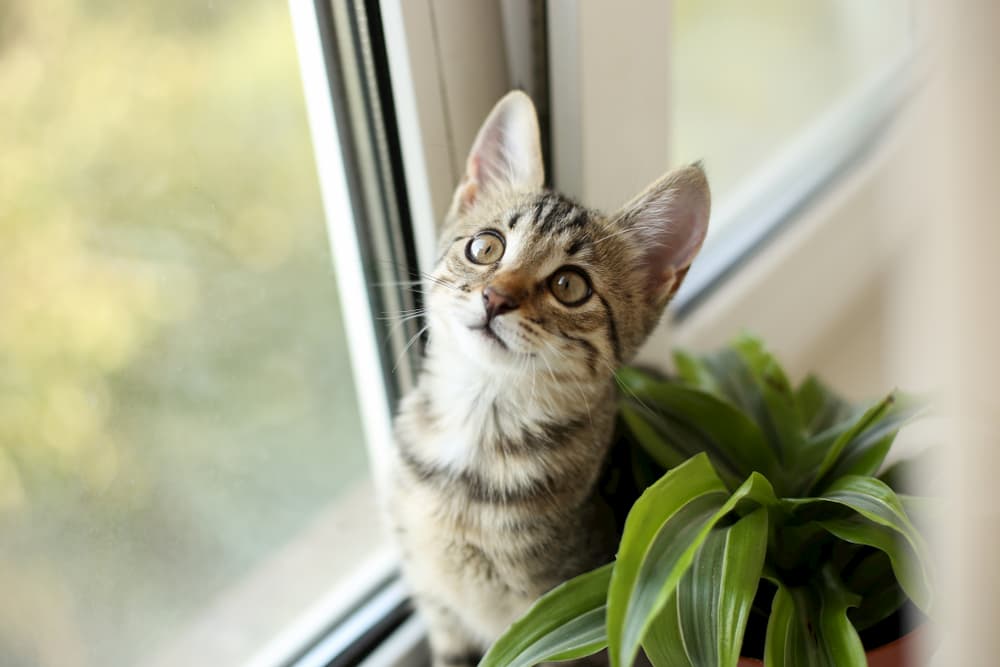
As enticing it is to diffuse some lavender to bring calming energy into your home, it may not be the best choice for your feline buddy. Here are ways to protect your indoor cat from lavender poisoning.
Keep lavender out of reach of cats. Instead of lavender, keep cat-friendly plants like catnip, oat grass (cat grass), and grow herbs like valerian, Cat’s Claw, and licorice root.
Lock up lavender oil and skin care products. If you use lavender oil or bath products with lavender, keep them in a locked cupboard out of reach. Don’t let your pet lick diffuser sticks or your skin after applying any lavender skin products.
Avoid topicals containing lavender. Richardson explains that cat parents should avoid the use of topical products that contain lavender essential oils. “Avoidance of applying topical essential oils, including lavender, to your pet is the best way to avoid toxicity,” she says.
Avoid lavender essential oils or sprays. Only use lavender-based diffusers or sprays with extreme caution, or don’t use them at all. “I would recommend complete avoidance of essential oil active diffusers or sprays,” says Richardson.

